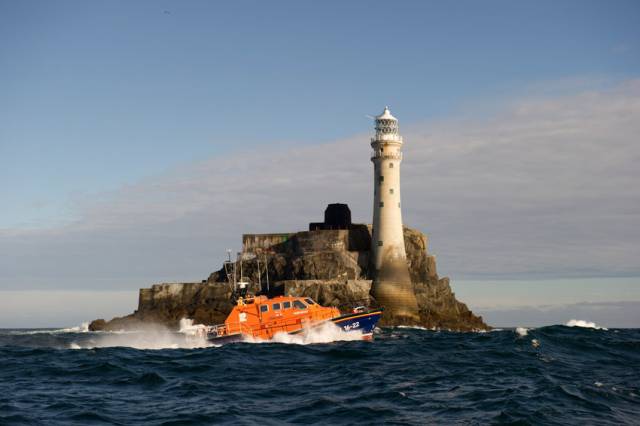#RNLI - Baltimore RNLI launched in the early hours of yesterday morning (Thursday 17 August) after a boat ran aground in heavy fog near the West Cork village.
The volunteer lifeboat crew were paged at 00.39am to assist the 50ft vessel with three people on board. Sea conditions in the area were calm, but visibility was poor due to fog.
Under the command of coxswain Kieran Cotter and with mechanic Cathal Cottrell and crew members Pat Collins, Kieran Collins, Don O’Donovan, Jerry Smith and Micheal Cottrell, the lifeboat reached the vessel within 15 minutes.
After assessing the grounded boat’s situation and checking the surrounding area for any navigational hazards, a tow was established and the vessel was pulled clear.
There was no apparent damage to the vessel and no injuries to anyone on board, so it was allowed to move under its own power Baltimore Harbour, where it arrived escorted by the lifeboat at 1.20am.
Speaking following the callout, Baltimore RNLI volunteer lifeboat press officer Kate Callanan said: “With bad weather forecast for the next few days we would remind everyone taking to the sea to respect the water.”
Earlier in the week, Baltimore RNLI launched on Tuesday night (15 August) after reports of a flare sighted at Gokane Point, near Toe Head.
However, the lifeboat was stood down en route when the Irish Coast Guard learned that the flare was actually a firework set off from land and not a boat in distress.
Elsewhere, Arklow RNLI’s volunteers launched yesterday afternoon following a pager alert to a call for help from a sailing vessel with engine trouble.
In moderate seas, the lifeboat Ger Tigchlearr proceeded to the reported position of the casualty vessel, some four miles north east of Arklow Harbour and with two people on board.
Once on scene, the vessel and crew of the casualty vessel were found be in good order, and a towline was established it bring the boat back to Arklow.
John Tyrrell, Arklow RNLI’s lifeboat operations manager, commented: “Our crew were able to get the casualty vessel in a timely fashion. We would like to commend the skipper of the boat for calling for help at an early stage.”































































